tutorial, characters, resources, video, further reading
Where Angels Fear to Tread, (1902) is Forster’s first novel and a witty debut. A spirited middle-class English girl goes to Italy and becomes involved with a local man. The English family send out a party to ‘rescue’ her (shades of Henry James) – but they are too late; she has already married him. But when a baby is born, the family returns with renewed hostility. The clash between living spirit and deadly rectitude is played out with amusing and tragic consequences.
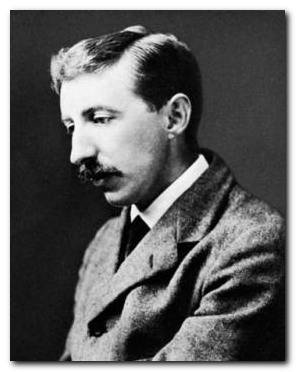
E.M.Forster
E.M. Forster is a bridge between the nineteenth and the twentieth century novel. He documents the Edwardian and Georgian periods in a witty and elegant prose, satirising the middle and upper classes he knew so well. He was a friend of Virginia Woolf, with whom he worked out some of the ground rules of literary modernism. These included the concept of ‘tea-tabling’ – making the substance of serious fiction the ordinary events of everyday life. He was also a member of The Bloomsbury Group.
His novels grew in complexity and depth, until he eventually gave up fiction in 1923. This was because he no longer felt he could write about the subject of heterosexual love which he did not know or feel. Instead, he turned to essays – which are well worth reading.
Where Angels Fear to Tread – plot summary
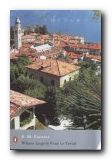 Lilia Herriton is a young woman whose huband has recently died. Leaving her daughter in the care of her in-laws (whose money she has inherited) she makes a journey to Tuscany with her young friend and traveling companion Caroline Abbott. She falls in love with both Italy and Gino Carella, a handsome Italian much younger than herself, and decides to stay. Furious, her dead husband’s family send Lilia’s brother-in-law to Italy to prevent a misalliance, but he arrives too late. Lilia has already married the Italian and in due course she becomes pregnant.
Lilia Herriton is a young woman whose huband has recently died. Leaving her daughter in the care of her in-laws (whose money she has inherited) she makes a journey to Tuscany with her young friend and traveling companion Caroline Abbott. She falls in love with both Italy and Gino Carella, a handsome Italian much younger than herself, and decides to stay. Furious, her dead husband’s family send Lilia’s brother-in-law to Italy to prevent a misalliance, but he arrives too late. Lilia has already married the Italian and in due course she becomes pregnant.
When she dies giving birth to a son, the Herritons learn that Lilia’s one-time traveling companion, Caroline Abbott, wishes to travel to Italy once again, this time to save the infant boy from an uncivilized life. Not wanting to be outdone – or considered any less moral or concerned than Caroline for the child’s welfare – Lilia’s in-laws try to take the lead in traveling to Italy. Philip is despatched again, but this time accompanied by his sister Harriet.
They make it known that it is both their right and their duty to travel to Monteriano to obtain custody of the infant so that he can be raised as an Englishman. Secretly, though, they have little regard for the child, only for public appearances. Both Italy and its inhabitants are presented as exuding an irresistible charm, to which eventually Caroline Abbott also succumbs.
The family manage to kidnap the child, but they bungle the event and the child is killed in an accident. Gino’s physical outburst toward Philip in response to the news makes Philip realize what it is like to truly be alive. The guilt felt by Harriet causes her to lose her mind. Finally, Philip realizes that he is in love with Caroline Abbott but that he can never have her, because she too admits to being in love with Gino.
Study resources
![]() Where Angels Fear to Tread – Penguin Classics – Amazon UK
Where Angels Fear to Tread – Penguin Classics – Amazon UK
![]() Where Angels Fear to Tread – Penguin Classics – Amazon US
Where Angels Fear to Tread – Penguin Classics – Amazon US
![]() Where Angels Fear to Tread – BBC audio books – Amazon UK
Where Angels Fear to Tread – BBC audio books – Amazon UK
![]() Where Angels Fear to Tread – film adaptation on DVD – Amazon UK
Where Angels Fear to Tread – film adaptation on DVD – Amazon UK
![]() Where Angels Fear to Tread – eBook versions at Gutenberg
Where Angels Fear to Tread – eBook versions at Gutenberg
![]() Where Angels Fear to Tread – audioBook version at LibriVox
Where Angels Fear to Tread – audioBook version at LibriVox
![]() The Cambridge Companion to E.M.Forster – Amazon UK
The Cambridge Companion to E.M.Forster – Amazon UK
![]() E.M.Forster at Wikipedia – biographical notes, links
E.M.Forster at Wikipedia – biographical notes, links
![]() E.M.Forster at Mantex – tutorials, web links, study resources
E.M.Forster at Mantex – tutorials, web links, study resources
Principal characters
| Lilia Herriton | a young widow |
| Caroline Abbott | her friend and travelling companion |
| Mrs Herriton | Lilia’s mother-in-law |
| Philip Herriton | Lilia’s young brother-in-law |
| Gino Carella | a handsome but poor Italian |
| Harriet Herriton | Lilia’s sister-in-law |
| Irma Herriton | Lilia’s young daughter |
Where Angels Fear to Tread – film version
1991 Charles Sturridge film adaptation
This film version is not a Merchant-Ivory production, although it’s done very much in their style. But it is accurate and entirely sympathetic to the spirit of the novel, possibly even stronger in satirical edge, well acted, and superbly beautiful to watch. Much is made of the visual contrast between the beautiful Italian setting and the straight-laced English capital from which the prudery and imperialist spirit emerges. The lovely Helena Bonham-Carter establishes herself as the perfect English Rose in this production, and she carried it through to several more. Helen Mirren is wonderful as the spirited Lilia who defies English prudery and narrow-mindedness and marries for love – with results which manage to upset everyone.
![]() See reviews of the film at the Internet Movie Database
See reviews of the film at the Internet Movie Database
The novel title
The title Where Angels Fear to Tread is taken from Alexander Pope’s Essay in Criticism (1711). This is a verse essay written in the Horatian mode and is primarily concerned with how writers and critics behave in the new literary commerce of Pope’s contemporary age. The poem covers a range of good criticism and advice. It also represents many of the chief literary ideals of Pope’s age.
Part II of An Essay on Criticism includes a famous phrase A little learning is a dangerous thing, which is often misquoted as ‘a little knowledge is a dangerous thing’.
Part II is also the source of this famous line: To err is human, to forgive divine.
Further reading
![]() David Bradshaw, The Cambridge Companion to E.M. Forster, Cambridge University Press, 2007
David Bradshaw, The Cambridge Companion to E.M. Forster, Cambridge University Press, 2007
![]() Richard Canning, Brief Lives: E.M. Forster, London: Hesperus Press, 2009
Richard Canning, Brief Lives: E.M. Forster, London: Hesperus Press, 2009
![]() G.K. Das and John Beer, E. M. Forster: A Human Exploration, Centenary Essays, New York: New York University Press, 1979.
G.K. Das and John Beer, E. M. Forster: A Human Exploration, Centenary Essays, New York: New York University Press, 1979.
![]() Mike Edwards, E.M. Forster: The Novels, London: Palgrave Macmillan, 2001
Mike Edwards, E.M. Forster: The Novels, London: Palgrave Macmillan, 2001
![]() E.M. Forster, Aspects of the Novel, London: Penguin Classics, 2005
E.M. Forster, Aspects of the Novel, London: Penguin Classics, 2005
![]() P.N. Furbank, E.M. Forster: A Life, Manner Books, 1994
P.N. Furbank, E.M. Forster: A Life, Manner Books, 1994
![]() Frank Kermode, Concerning E.M. Forsterl, London: Weidenfeld and Nicolson, 2009
Frank Kermode, Concerning E.M. Forsterl, London: Weidenfeld and Nicolson, 2009
![]() Rose Macaulay, The Writings of E. M. Forster, New York: Barnes and Noble, 1970.
Rose Macaulay, The Writings of E. M. Forster, New York: Barnes and Noble, 1970.
![]() Nigel Messenger, How to Study an E.M. Forster Novel, London: Palgrave Macmillan, 1991
Nigel Messenger, How to Study an E.M. Forster Novel, London: Palgrave Macmillan, 1991
![]() Wendy Moffatt, E.M. Forster: A New Life, London: Bloomsbury Publishing, 2010
Wendy Moffatt, E.M. Forster: A New Life, London: Bloomsbury Publishing, 2010
![]() Nicolas Royle, E.M. Forster (Writers and Their Work), Northcote House Publishers, 1999
Nicolas Royle, E.M. Forster (Writers and Their Work), Northcote House Publishers, 1999
![]() Jeremy Tambling (ed), E.M. Forster: Contemporary Critical Essays, London: Palgrave Macmillan, 1995
Jeremy Tambling (ed), E.M. Forster: Contemporary Critical Essays, London: Palgrave Macmillan, 1995
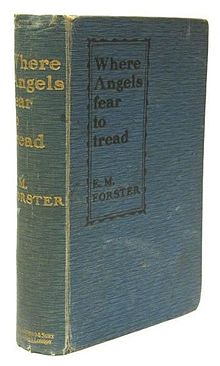
first edition – Blackwood 1905
Other work by E.M. Forster
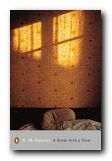 A Room with a View (1905) This is another comedy of manners and a satirical critique of English stuffiness and hypocrisy. The impulsive and cultivated Lucy Honeychurch must choose between taklented but emotionally frozen Cecil Vyse and the impulsive George Emerson. The staid Surrey stockbroker belt is contrasted with the magic of Florence, where she eventually ends up on her honeymoon. Upper middle-class English tourists in Italy are an easy target for Forster in some very amusing scenes.
A Room with a View (1905) This is another comedy of manners and a satirical critique of English stuffiness and hypocrisy. The impulsive and cultivated Lucy Honeychurch must choose between taklented but emotionally frozen Cecil Vyse and the impulsive George Emerson. The staid Surrey stockbroker belt is contrasted with the magic of Florence, where she eventually ends up on her honeymoon. Upper middle-class English tourists in Italy are an easy target for Forster in some very amusing scenes.
![]() Buy the book at Amazon UK
Buy the book at Amazon UK
![]() Buy the book at Amazon US
Buy the book at Amazon US
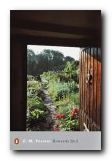 Howards End (1910) is a State of England novel, and possibly Forster’s greatest work – though that’s just my opinion. Two families are contrasted: the intellectual and cultivated Schlegels, and the capitalist Wilcoxes. A marriage between the two leads to spiritual rivalry over the possession of property. Following on their social coat tails is a working-class would-be intellectual who is caught between two conflicting worlds. The outcome is a mixture of tragedy and resignation, leavened by hope for the future in the young and free-spirited.
Howards End (1910) is a State of England novel, and possibly Forster’s greatest work – though that’s just my opinion. Two families are contrasted: the intellectual and cultivated Schlegels, and the capitalist Wilcoxes. A marriage between the two leads to spiritual rivalry over the possession of property. Following on their social coat tails is a working-class would-be intellectual who is caught between two conflicting worlds. The outcome is a mixture of tragedy and resignation, leavened by hope for the future in the young and free-spirited.
![]() Buy the book at Amazon UK
Buy the book at Amazon UK
![]() Buy the book at Amazon US
Buy the book at Amazon US
© Roy Johnson 2010
More on E.M. Forster
More on the novella
More on literary studies
More on short stories
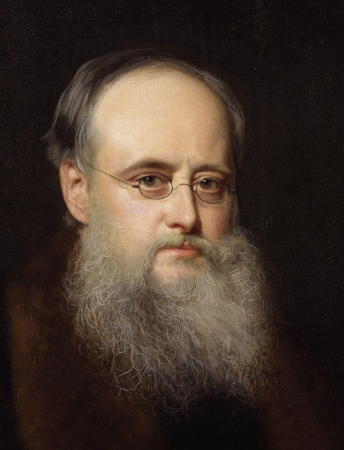
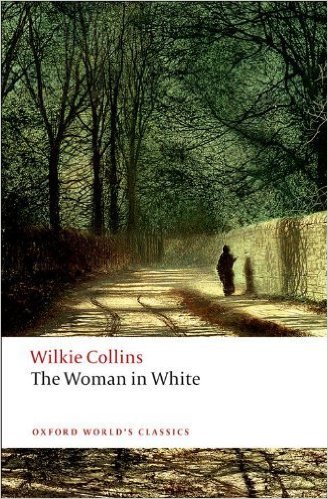
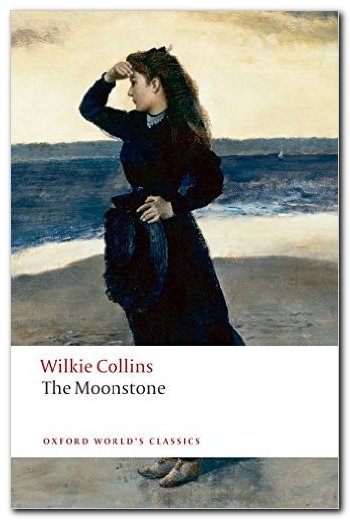
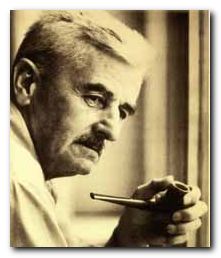 William Faulkner (1897—1962) grew up in Oxford, Mississippi, and lived there for the rest of his life – with only brief intermissions for travel and working in Hollywood as a screenwriter. He was one of the major American writers of the early twentieth century. He established the white protestant version of the American south, reflecting its values of that period – the collapse of the white land owning aristocracy and the inability (at that time) of the blacks to shake off the legacy of slavery. Faulkner was a literary experimentalist, influenced by the modernist period, and he sometimes makes extreme demands on his readers. He uses stream of consciousness, fragmented chronology, shifting point of view, and multiple narrative voices. Even in some of his plain narratives, the story is expressed in sentences which sometimes go on for two or three pages at a time.
William Faulkner (1897—1962) grew up in Oxford, Mississippi, and lived there for the rest of his life – with only brief intermissions for travel and working in Hollywood as a screenwriter. He was one of the major American writers of the early twentieth century. He established the white protestant version of the American south, reflecting its values of that period – the collapse of the white land owning aristocracy and the inability (at that time) of the blacks to shake off the legacy of slavery. Faulkner was a literary experimentalist, influenced by the modernist period, and he sometimes makes extreme demands on his readers. He uses stream of consciousness, fragmented chronology, shifting point of view, and multiple narrative voices. Even in some of his plain narratives, the story is expressed in sentences which sometimes go on for two or three pages at a time.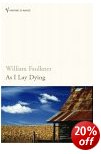 As I Lay Dying (1930) is a good point to start. It charts the journey of a poor family to bury their mother Addie Bundren in Jefferson. They make the coffin themselves and survive crossing the flooded Yoknapatwapha river, a fire, and other largely self-inflicted problems, to finally reach their goal. The novel is told in the rapidly intercut voices of the family members – including the dead mother. It is simultaneously funny, and tragic – a small scale epic which Faulkner wrote in the space of six weeks.
As I Lay Dying (1930) is a good point to start. It charts the journey of a poor family to bury their mother Addie Bundren in Jefferson. They make the coffin themselves and survive crossing the flooded Yoknapatwapha river, a fire, and other largely self-inflicted problems, to finally reach their goal. The novel is told in the rapidly intercut voices of the family members – including the dead mother. It is simultaneously funny, and tragic – a small scale epic which Faulkner wrote in the space of six weeks. The Sound and The Fury is generally regarded as his greatest work. It is a narrative tour de force in which Faulkner views the decline of the south through the point of view of four characters. The novel centres on the once-aristocratic Compson family, who appear in his other novels. The siblings Quentin and Caddy fall from a state of innocence and succumb to the family pattern of incest, erotomania, and suicide. One of their brothers is severely mentally handicapped. The first part of the novel is told entirely from his point of view – and of course he ‘sees’ the truth of much that is going on. The other narrator is the black servant who is powerless but ‘endures’. It is a work of astonishing brilliance, written in a sombre and lyrical mood.
The Sound and The Fury is generally regarded as his greatest work. It is a narrative tour de force in which Faulkner views the decline of the south through the point of view of four characters. The novel centres on the once-aristocratic Compson family, who appear in his other novels. The siblings Quentin and Caddy fall from a state of innocence and succumb to the family pattern of incest, erotomania, and suicide. One of their brothers is severely mentally handicapped. The first part of the novel is told entirely from his point of view – and of course he ‘sees’ the truth of much that is going on. The other narrator is the black servant who is powerless but ‘endures’. It is a work of astonishing brilliance, written in a sombre and lyrical mood.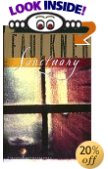 Sanctuary (1931) is an example of Faulkner writing simultaneously at his best and worst. The novel was produced to make money, and is a sort of rural South whodunit which centres on a particularly grizzly crime. All the southern Gothic elements are here. The main plot revolves around Temple Drake, a coquettish college girl who likes to secretly sneak out of her college dorm to attend dances. She takes one step too far onto the wild side, and the result is a helter-skelter ride down into the moral abyss. The novel also includes a psychopathic bootlegger, corrupt local officials, the trial of an innocent man, and a public lynching. It was Faulkner’s only best-seller.
Sanctuary (1931) is an example of Faulkner writing simultaneously at his best and worst. The novel was produced to make money, and is a sort of rural South whodunit which centres on a particularly grizzly crime. All the southern Gothic elements are here. The main plot revolves around Temple Drake, a coquettish college girl who likes to secretly sneak out of her college dorm to attend dances. She takes one step too far onto the wild side, and the result is a helter-skelter ride down into the moral abyss. The novel also includes a psychopathic bootlegger, corrupt local officials, the trial of an innocent man, and a public lynching. It was Faulkner’s only best-seller.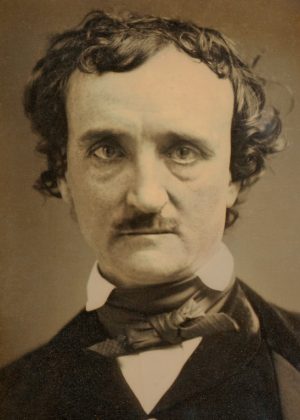
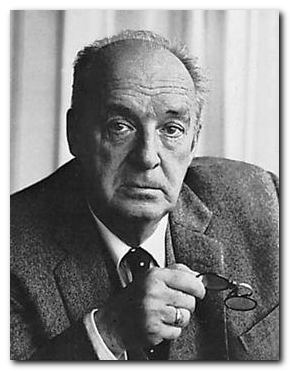
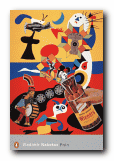 Pnin
Pnin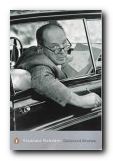 Collected Stories
Collected Stories
 Women in Love was originally published in New York City as a limited edition (1250 books), available only to subscribers; this was due to the controversy caused by The Rainbow. Because the two books were originally written as parts of a single novel, the publisher had decided to publish them separately and in rapid succession. The first book’s treatment of sexuality, while tame by today’s standards, was rather too frank for the Edwardian era. There was an obscenity trial and The Rainbow was banned in the UK for 11 years, although it was available in the US. The publisher then backed out of publishing the second book in the UK, so it first appeared in the US in 1920.
Women in Love was originally published in New York City as a limited edition (1250 books), available only to subscribers; this was due to the controversy caused by The Rainbow. Because the two books were originally written as parts of a single novel, the publisher had decided to publish them separately and in rapid succession. The first book’s treatment of sexuality, while tame by today’s standards, was rather too frank for the Edwardian era. There was an obscenity trial and The Rainbow was banned in the UK for 11 years, although it was available in the US. The publisher then backed out of publishing the second book in the UK, so it first appeared in the US in 1920.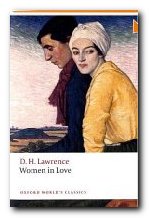 All four are deeply concerned with questions of society, politics, and the relationship between men and women. Ultimately however, the two relationships go in very different directions. The initial strife between Birkin and Ursula over his lingering attachment to the controlling Hermione Roddice is resolved by his eventual willingness to break off their relationship, and Birkin and Ursula give up their jobs as teachers to take up a more bohemian lifestyle.
All four are deeply concerned with questions of society, politics, and the relationship between men and women. Ultimately however, the two relationships go in very different directions. The initial strife between Birkin and Ursula over his lingering attachment to the controlling Hermione Roddice is resolved by his eventual willingness to break off their relationship, and Birkin and Ursula give up their jobs as teachers to take up a more bohemian lifestyle.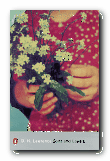 Sons and Lovers
Sons and Lovers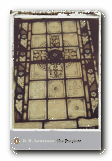 The Rainbow
The Rainbow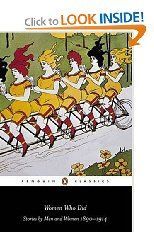
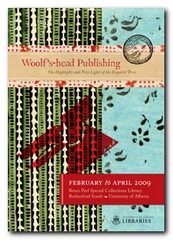
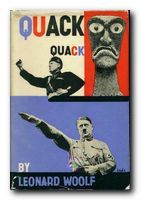 The other Press publications upon which the collection focuses are those by Virginia Woolf herself – all illustrated by her sister Vanessa Bell. There are also examples of the polemical essays published in the 1930s, which included arguments against Imperialism and in favour of feminism (of which Leonard was a champion). A short series of public letters even included ‘A Letter to Adolf Hitler’ by Louis Golding.
The other Press publications upon which the collection focuses are those by Virginia Woolf herself – all illustrated by her sister Vanessa Bell. There are also examples of the polemical essays published in the 1930s, which included arguments against Imperialism and in favour of feminism (of which Leonard was a champion). A short series of public letters even included ‘A Letter to Adolf Hitler’ by Louis Golding.
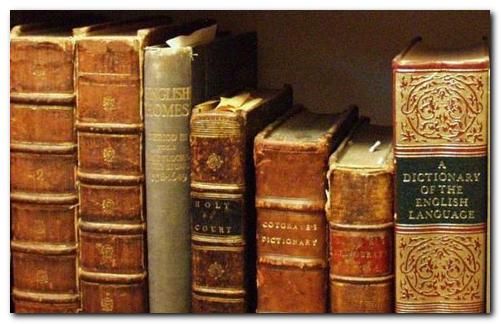


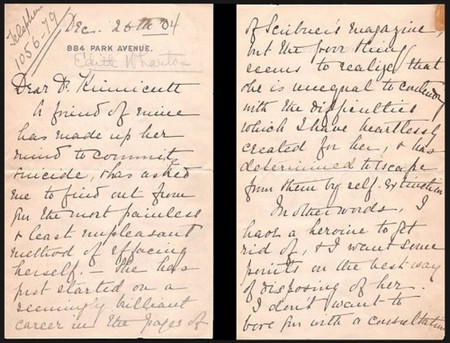
 The Custom of the Country
The Custom of the Country The House of Mirth
The House of Mirth